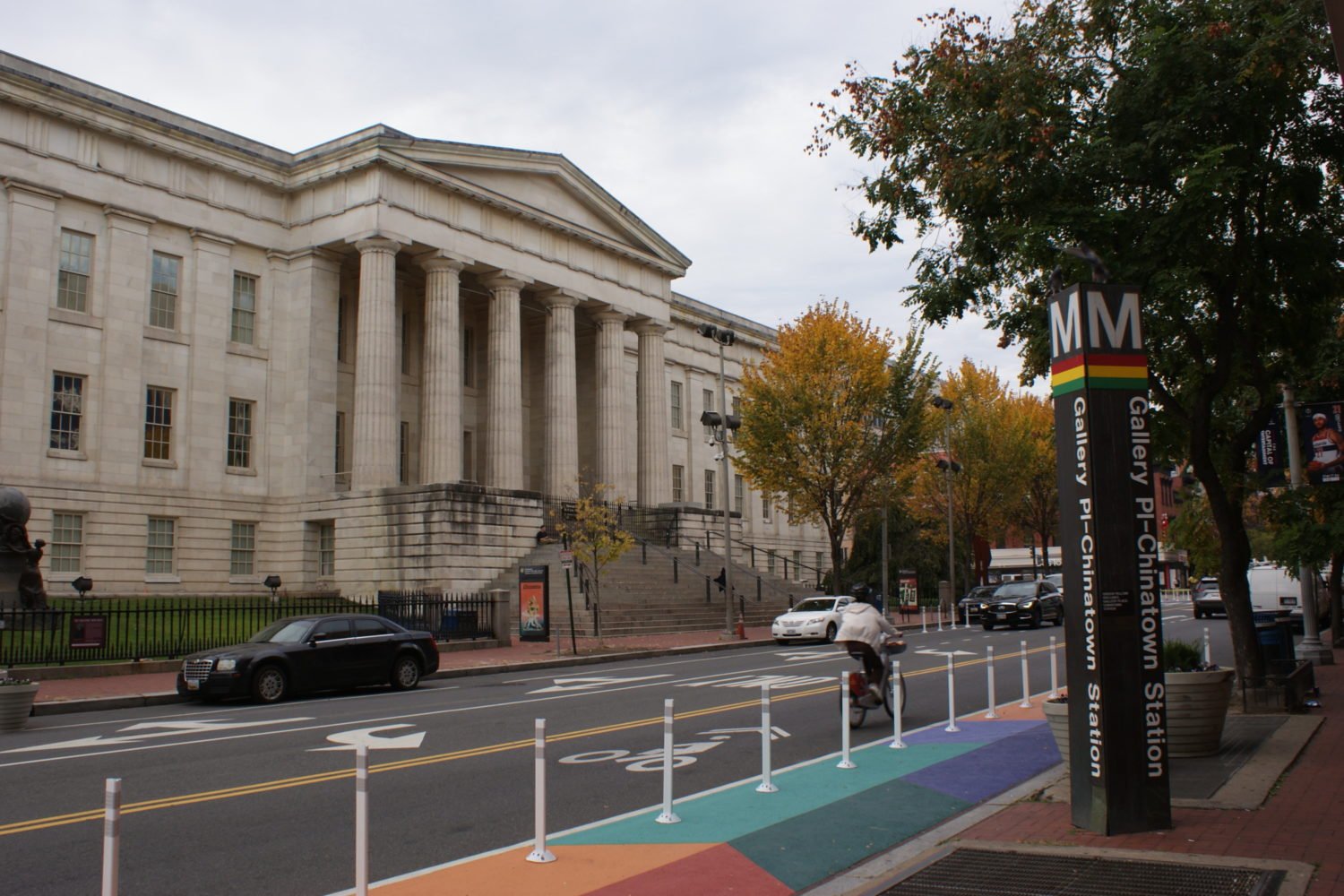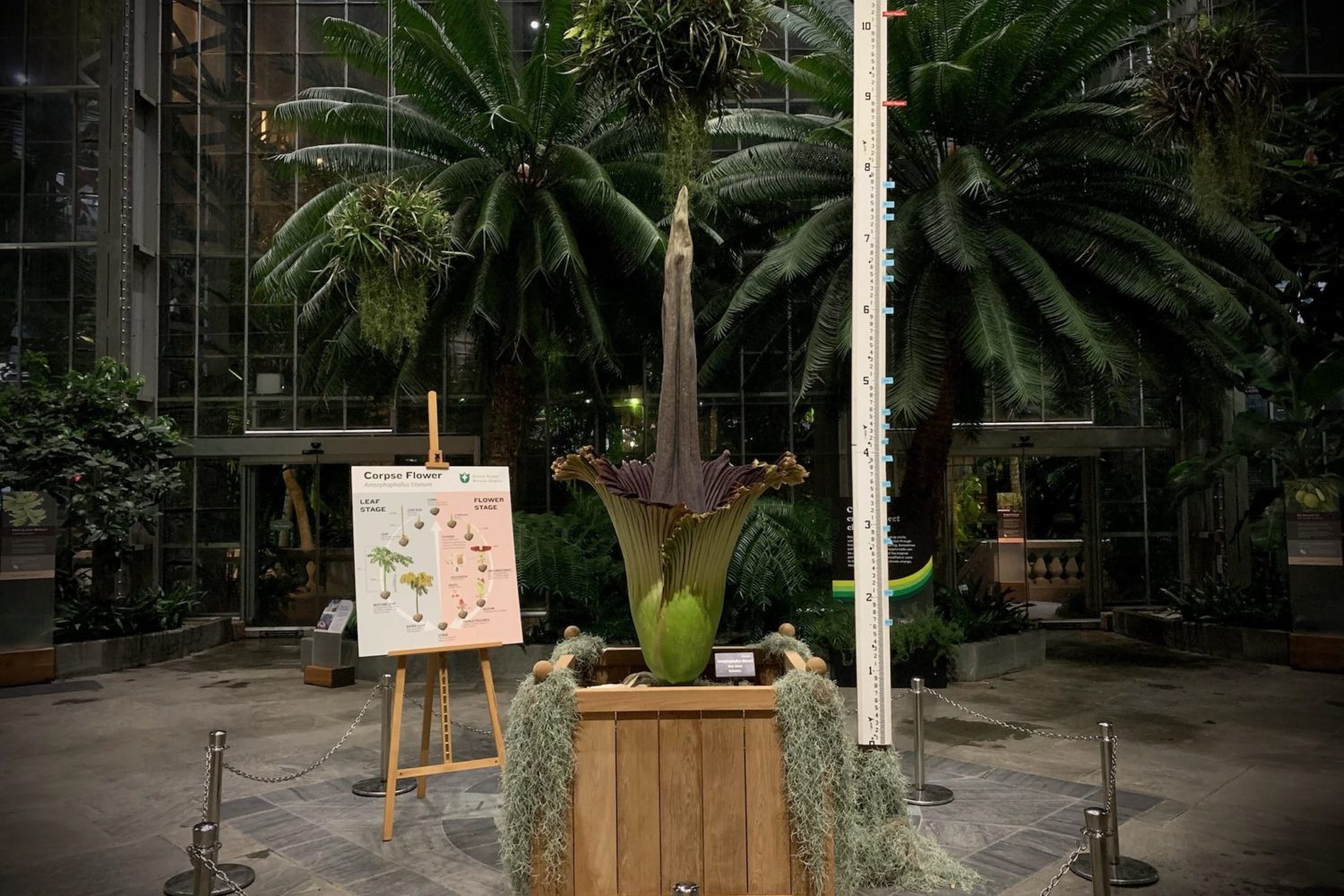Walking through the Hirshhorn Museum one afternoon, Ola Kohlemainen, a Finnish photographer, began murmuring in his native tongue as he moved from one art-filled room to the next. Asked what he was saying, he said, “This place is incredible.”
Finland’s contemporary-art museums are good, he said, but have limited resources: “We don’t have anything like this. I live in Berlin, and I’ve traveled all over, but I don’t know anyplace that matches what Washington has. You’ve got the Hirshhorn and the National Gallery right across from each other with fantastic collections, and you walk in for free.”
Like millions of other visitors, Kohlemainen has discovered that Washington is more than a political city. Judged by the breadth and depth of the museum collections—and their accessibility—it is the greatest museum city in the world.
“Even New York doesn’t have the concentration of the European, the American, the African, and the Asian art collections that Washington has now,” says Roy Slade, director emeritus of Cranbrook Art Museum in Michigan and former head of the Corcoran Gallery of Art.
Art is only the beginning.
Nowhere else can museumgoers see masterpieces from around the world, ranging from contemporary to ancient, as well as the Wright brothers’ 1903 Flyer and Dorothy’s ruby slippers in one day on foot without paying a cent. By comparison, the Louvre in Paris charges $24 for the permanent collection and temporary exhibitions.
Washington attained its status as a cultural mecca over the past 40 years as the city became home to such new museums as the Hirshhorn, the National Gallery of Art’s East Wing, Air and Space, the US Holocaust Memorial Museum, the Sackler, and the National Museum of the American Indian. In the museum world, where establishing a single institution can take decades, that is a breathtakingly brief and uniquely American ascent.
“Only in America could this have occurred,” says the Welsh-born Slade. “Only America has the money, the power, the will, and the spirit, that combination of want-to, can-do, do-it-now, and know-how.”
Washington’s evolution as a cultural capital continues. Expansion, big ideas, and grand venues are hallmarks of our nation’s history, and they are evident in the latest additions: the Newseum, scheduled to open October 15; the remodeled Smithsonian American Art Museum and National Portrait Gallery, opened in July 2006; the National Museum of the Marine Corps, opened last November in Quantico; and Mount Vernon’s new museum and orientation center, which opened in October.
The 250,000-square-foot Newseum, at 555 Pennsylvania Avenue between the Capitol and the White House, is a dazzling, glass-walled structure designed by architect James Polshek, renovator of Carnegie Hall and designer of the Clinton Presidential Library in Little Rock. It will have seven levels of galleries and theaters with exhibits meant to give visitors an insider’s look at how news is made. The complex includes apartments called the Newseum Residences. It features a conference center and a three-level restaurant, the Source by Wolfgang Puck—the legendary chef’s first restaurant venture here.
Since its opening last fall, the Marine Corps Museum has attracted 300,000 visitors, many of them Marine veterans and active-duty personnel. Like the Holocaust museum, it gives visitors a deeply emotional and personal connection to history.
Many exhibits in the $435-million Newseum and $90-million Marine Corps museum feature the latest interactive technology, allowing visitors to produce a simulated television newscast or pilot a fighter jet on a faux combat mission.
At the renovated Smithsonian American Art Museum and National Portrait Gallery, visitors find a new conservation facility allowing permanent public viewing of conservators at work and the first open-to-the-public art-storage center in Washington.
The museums’ courtyard, covered with a glass roof designed by British architect Norman Foster, will officially open November 18, providing a large, all-weather space for programs and exhibitions. And unlike the Mall museums that close at 5:30 pm, the American Art Museum and Portrait Gallery stay open until 7 to attract the Penn Quarter evening crowd.
Even with all the new competition, the city’s established art venues hold their own, offering many of this season’s highlights. For painting fans, the National Gallery’s “Edward Hopper” and “J.W.M. Turner” and the Hirshhorn’s “Morris Louis Now” are must-see shows this fall.
Photography is well represented with the Corcoran featuring exhibitions of work by heavyweights Ansel Adams and Annie Liebovitz. Those preferring a less stylized approach should visit the Hirshhorn’s exhibition over the summer of works by Wolfgang Tillmans, one of the most original photographic artists working today.
The National Air and Space Museum is the Smithsonian’s most popular museum. But a section has been closed for renovation and the installation of a new exhibition, “America by Air.” Opening November 17, the new show will trace the development of air travel in the United States while incorporating some of the planes that were previously in the space.
Impressive as they are, Washington’s museums aren’t without challenges. I.M. Pei’s East Wing is a sculptural, light-washed structure severely lacking that most basic museum need: wall space. The Corcoran seems to be perpetually searching for an identity.
The older museums, for their part, must be maintained, and attracting donors for a spiffy new building is easy when compared with raising funds to renovate the bathrooms or repair a leaky roof.
A 2005 report by the Government Accountability Office described the Smithsonian Institution, whose 20 venues make it the world’s largest museum complex, as having “major structural deterioration” in some buildings. At least two historic aircraft in the National Air and Space Museum have been damaged by water. The GAO estimated a need of at least $2.3 billion over the next six years for construction, antiterrorism measures, and maintenance. How much of that money Congress will pony up is a real question.
Fundraising was a specialty of Lawrence Small’s, who resigned as Smithsonian secretary in March after controversy over his personal expenses. Cristián Samper, the 41-year-old biologist and head of the National Museum of Natural History, is acting secretary, and he faces the task of repairing the Smithsonian’s image and staff morale. Whoever takes charge permanently will face major infrastructure and funding issues.
But battling bureaucrats and damp basements aren’t what visitors go to Washington’s museums to see. And for the most part, those struggles remain behind the scenes, overshadowed by the wondrous collections, star architects, and interactive technology. It’s a cultural offering that millions of visitors from all over the world each year find worth the trip.
The following articles offer a guide to nearly 150 area attractions. We highlight the Top Ten offerings that you shouldn’t miss as well as great places to take kids, get good food, find unique gifts, and do a lot more than look.

















